Malta – heard of it, right? That little island in the Mediterranean that’s part of Italy? Wrong! Spain? Wrong again!
Malta is actually an archipelago of islands that make up this independent country, famous for its tax benefits, and of course, the birthplace of the Maltese Poodle.
Because Malta is a European country with the latitude of a North African one, it gets decent weather all year round. This also makes it a tourism hotspot for other Europeans looking for an island getaway not too far from home.
The Maltesers are some of the kindest and charismatic short little people you will ever meet. They have a great sense of humour, eat lots of rabbits and speak a funny language that sounds like Italian, Arabic and English all mixed together. This destination is popular for a reason, and the local people are one of my favourite reasons to come back time and time again.
Now, if you want to avoid the masses of tourists that descend upon the country during the peak summer months, then stick around. I’ve done the hard yards and all the research on your behalf – you’re welcome!
I’ve put together this extensive guide for the best time to visit Malta. It will enable you to avoid all the sweaty tourists, save some cash traveling in the fringe seasons, and have a smash-tactic Euro trip.
Let’s dive in (to the article, not the pristine Maltese waters…just yet)!

Photo: @joemiddlehurst
The Broke Backpacker is supported by you. Clicking through our links may earn us a small affiliate commission, and that's what allows us to keep producing free content 🙂 Learn more.
Best Time to Visit Malta – April/May and September/October
Best Time to Go to Valletta – April and May; September/October
Best Time to Visit Malta for Parties and Festivals – June to August
Best Time for Sightseeing – Fringe seasons (April/May and September and October)
Best Time for the Beach – Summertime (June, July, and August)
Cheapest Time to Visit Malta – November and January
When is the Best Time to Visit Malta?
The hottest months of the year in Malta are July and August. This happens to coincide with the busiest months in the country, unfortunately.
If you’re thinking of visiting between June and August, you’re going to be hit with wave upon wave of tourists (and not the good kind from the ocean). You MUST book your place to stay in Malta ASAP if you want to come in the summertime.
However, this is the best time for hitting both the beaches and festivals in Malta. So, some tough decisions will need to be made!
The shoulder season in Malta is between March and May and then again between September and October. In my humble opinion, this is one of the best times to visit Malta. During these months, the weather is more moderate and not as piping hot as in the peak summer months.
There are also fewer tourists during this time so you’ll have a bit more space to spread out on the beaches. It’s also a great time to hike, bike, and run thanks to the slightly cooler temperatures.

The off-season in Malta falls between November and February when temperatures drop and tourists head back home. Don’t let the dropping temperatures get you down though – there are upsides to this!
When temperatures drop, so too do tourist numbers, and one step further, so do the prices of hotels and hostels in Malta. See? It’s a win!
It’s also a great time of year to visit cultural sites that are normally packed full of tourists like a tin of sardines. So, tap into your inner cultural side and go visit some museums, churches, and galleries – your mom will be proud.
Now listen, don’t get me wrong, travelling during the peak season can be great. You’ve just got to be prepared to hustle a bit and cough up a bit of extra hard-earned cash. But that’s not to say you can’t find yourself a sweet deal.
Cheapest Time to Visit Malta
The cheapest time to visit Malta coincides with the off-season in the country – between November and February. But let’s face it, Malta is still expensive, especially if you’re coming from a country that has a weaker currency.
Malta is a relatively small country, so don’t expect to get away with huge price variations that you might experience in countries like Italy or France. During the peak months, you’re going to be subjected to massively inflated prices because, well, businesses can do it and get away with it.
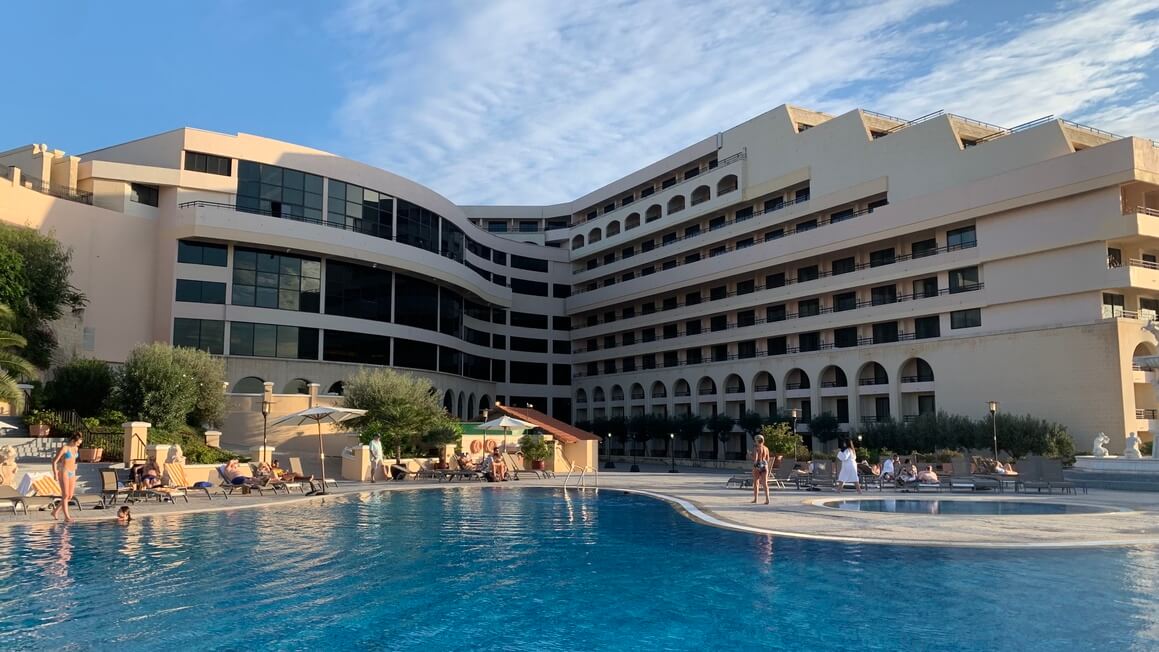
Photo: @joemiddlehurst
If you’re out to find an accommodation bargain, you know, a sweet deal, then the shoulder seasons and off-seasons are your best bet. General items like food and drink and attractions aren’t going to vary massively in price. Accommodation, on the other hand, can have a huge price difference!
Another way to save is to find a last-minute deal. These can sometimes work out for you, but it is risky. You might find yourself in a situation where all the accommodation is sold out and your holiday gets ruined.
When to Visit Malta – Weather by Month
Not all months were created equal! Some are great, some are not, and the rest are somewhere in between. Whenever you decide to visit, be aware that the weather in Malta affects the activities that you enjoy.
Although it is one of the best actions for backpackers in Europe to head in the colder months, don’t go visiting in March and expect to hit the beaches…

Photo: @joemiddlehurst
Each month has its pros and cons, so let’s take a look at a month-by-month breakdown. After all, it might influence your decision if your mind isn’t already made up.
January in Malta
- Average Max. Temperature: 16°C, 60.1°F
- Rainfall: 8 days
January is one of the coldest months in Malta, but still relatively mild compared to the rest of Europe during the same time.
While it’s not the best time to visit the country if you’re after a seaside holiday, accommodation prices do drop at this time so you can score a deal. There are also fewer queues at the cultural attractions so it’s the perfect time to tap into your inner cultural nerd.
Some things to look out for in January are those post-Christmas specials (we all love those!) and the Valetta Baroque Festival. The festival showcases some amazing concerts and operas in some of the most picturesque settings.
Although there is a small amount of rain too, the day/night temperature fluctuations aren’t crazy, and the average daily temperature hovers at around 13°C.
February in Malta
- Average Max. Temperature: 16°C, 60.1°F
- Rainfall: 7 days
February, along with January, is one of the coldest months on the islands, with a similar average daily temperature of around 13°C. With slightly less rainfall, the light at the end of the winter tunnel is slowly becoming visible (the days are also slightly longer than in January – woohoo!).
Unfortunately, no swimming again during February (only for the bravest and Wim Hoffers) but there are other things to look for, luckily! Il Karnival ta’ Malta falls in the month of February and is one of the favourite attractions in Valletta, Victoria, and Nadur.
These century-old celebrations involve locals and tourists alike taking to the streets in colourful attire and parading the night away on lavishly decorated floats. The island really comes alive!
March in Malta
- Average Max. Temperature: 17°C, 62.6°F
- Rainfall: 5 days
The good news about March is that the weather really starts to settle down. I’m talking about warmer days, less rainfall, and optimal conditions for outdoor activities.
The average daily temperature climbs to around 14°C and is perfect for hiking in Malta and mountain biking on the island. The Malta Marathon also happens in March and takes competitors around the beautiful shoreline sections of Valletta as well as the old, walled city of Mdina.
The ocean temperatures are still a bit chilly for swimming but there’s nothing more refreshing than a chilly dip after a solid run or cycle.
April in Malta
- Average Max. Temperature: 20°C, 68°F
- Rainfall: 3 days
Now we’re getting to the good times – the warmer spring days are very much on their way to the islands and things are warming up. Minimal rainfall is accompanied by higher average daily temperatures (the Mercury even starts breaking the 20°C mark).
April is also one of the most important months for the Maltese – Holy Week falls in April and involves all things religious. Life-size depictions of Christ, processions, and fireworks light up the towns during the middle of the month.
May in Malta
- Average Max. Temperature: 24°C, 75.2°F
- Rainfall: 1 day
May is one of those fringe-season-winner travel times – the average daily temperatures are consistently in the 20s and there’s almost no rain. In my opinion, it’s almost the best time to visit Malta.
This also coincides with sea temperatures rising and the swimming seasons commencing. It’s also the perfect time to visit cultural attractions and tourist sites are less busy, too. Accommodation prices are also not exorbitant yet and the music festivals begin to commence for the summer. The country really starts coming alive!
June in Malta
- Average Max. Temperature: 28°C, 82.4°F
- Rainfall: 0 days
Now we’re onto the hot stuff, so to speak – summer has begun and the living is easy. Think blue skies, warm weather, and no rainfall – pure bliss! Average daily temperatures are well into the mid-20s and the sea welcomes visitors and locals alike with its warm temperatures too.
You can even get away with pretty uncrowded beaches in early June before the summer madness begins. There are plenty of summer parties, festivals, and raves during the month of June, that carry on throughout the summer. Events like Lost & Found and ABODE on the Rock are synonymous with June and really kickstart the summer party vibe and all-around good times.
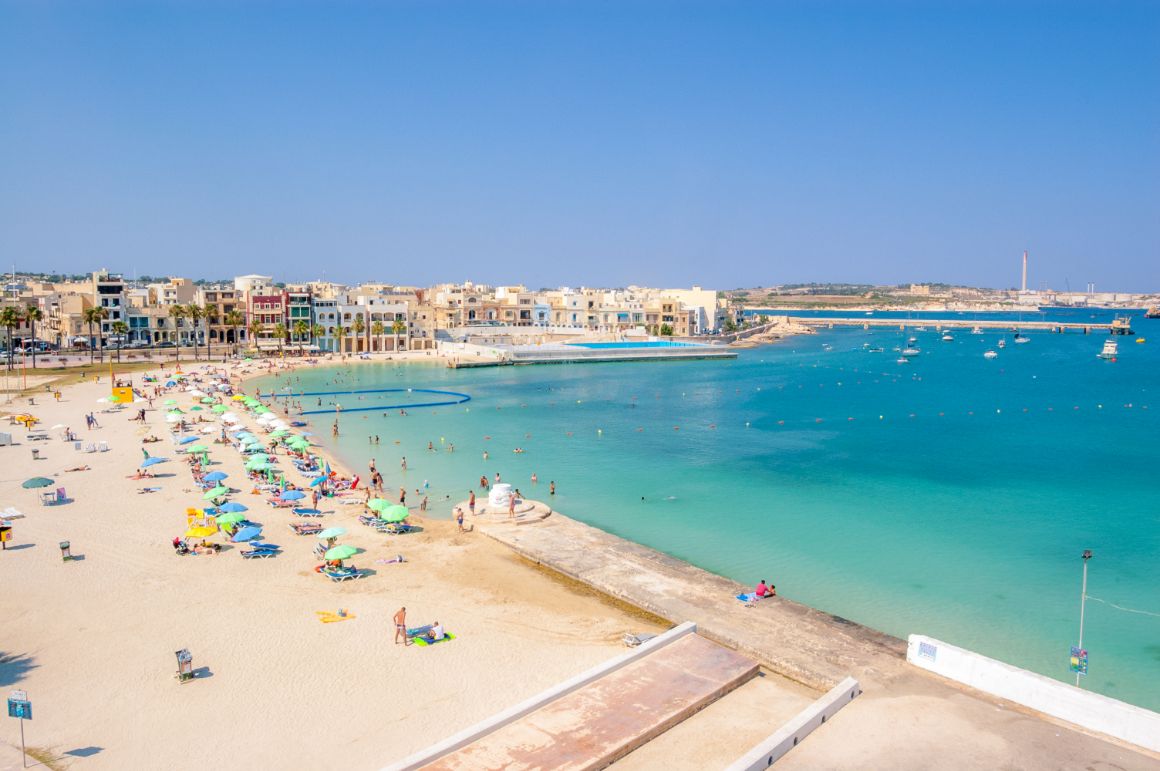
July in Malta
- Average Max. Temperature: 31°C, 87.8°F
- Rainfall: 0 days
During July, the weather in Malta is at its peak – expect average daily temperatures of around 26°C and sea temperatures of about the same.
July is also one of the best months to visit Malta if you enjoy music and festivals. The Isle on MTV is held in Malta every July and is one of Europe’s largest music festivals that is, wait for it, free! It takes place at the Il-Fosos Square in Floriana and usually boasts some pretty impressive headliners and acts, considering it’s completely free to attend.
August in Malta
- Average Max. Temperature: 32°C, 89.6°F
- Rainfall: 0 days
August is the month where the average daily temperatures begin to drop – but only marginally, so don’t stress. While the beginning of the month starts out hot, by the end of the month, the temperatures begin to dip. You can still expect average daily temperatures of around 25°C.
The sea temperatures are also at their optimal point and swimming and other watersports are still top of the order for the month of August. There are still some amazing music festivals happening and one of the highlights is the Glitch Festival – a techno and house extravaganza.
You can also expect to come across Maltese festas during August. They are hosted by the local villages and communities and aim to showcase Maltese culture and traditions. See, it’s not all fun and games – there are some traditional cultural things to do too.
September in Malta
- Average Max. Temperature: 28°C, 82.4°F
- Rainfall: 3 days
The average daily temperatures continue to drop in September but the days are still beautifully warm, sunny, and dry. Some rainfall starts to creep in, however, and Malta usually experiences a few days of rain in the month of September.
While the rainfall is despised by beachgoers and holidaymakers, the local farmers and winemakers welcome it with open arms. The sea temperature still remains warm during September and swimming and other watersports are still popular.
The biggest event in September, however, doesn’t happen on land. It takes place in the skies above! Yes, that’s right! The Malta International Airshow takes place in the country every year and wows locals and visitors alike with some incredible aeroplane acrobatics.
October in Malta
- Average Max. Temperature: 25°C, 77°F
- Rainfall: 5 days
The weather can’t seem to make up its mind in October and it’s a bit all over the place. The temperatures are mild and can be nice and sunny, but also cloudy and a bit rainy.
October is the best time to visit Malta if you’re a motorsport fanatic – the country plays host to Malta Classic every year. This grand prix takes place in Mdina and sees classic cars taking to the winding roads around the city. It really is a car fan’s dream!
If motorsports aren’t your cup of tea, then there are luckily other attractions to keep you entertained in October. The BirguFest is a three-day music festival to keep the party alive and Notte Bianca Arts Festival provides some night-time entertainment.
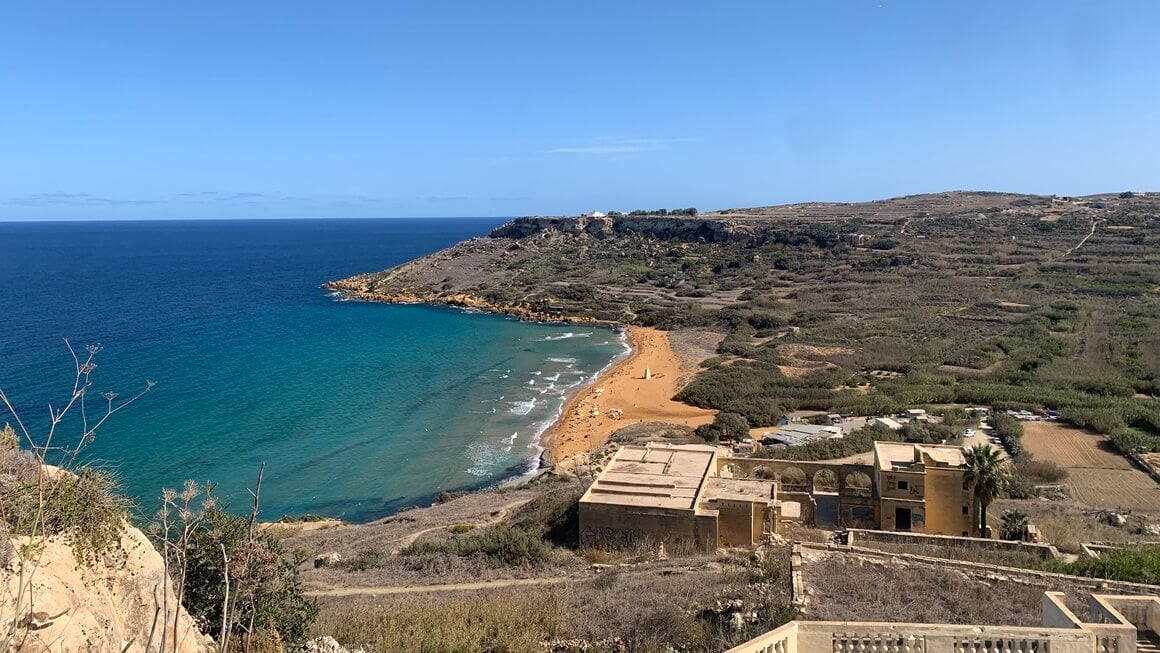
Photo: @joemiddlehurst
November in Malta
- Average Max. Temperature: 21°C, 69.8°F
- Rainfall: 7 days
Malta is one of my fav locations to visit in November. The weather in Malta during this time is still moderate but be prepared to have rain at least once every few days. The average daily temperature also begins to dip below the 20-degree mark and sea temperatures remain cool.
However, not all is lost! This is a great time to travel to the country as there are far fewer crowds and you can score some pretty sweet accommodation deals. It’s also a more art and culture time in the country, with the Malta Book Festival in Valletta and the Mdina Cathedral Contemporary Art Biennale falling in the month.
December in Malta
- Average Max. Temperature: 17°C, 62.6°F
- Rainfall: 8 days
The average daily temperatures in Malta during December are considered to be cool and mild, and there is a bit of rain to accompany the cooler weather. This being said the weather in Malta during December time is far more moderate than in the rest of Europe
Many believe that December is not the best time to go to Malta, but these are the people that obviously haven’t spent Christmas in the country. It is a time where the focus is on family and traditions and it’s a wonderful time to visit the country.
Best Time to Visit Malta by Place
I’ve picked a few of the best places in Malta to visit that you definitely cannot miss! Malta is made up of three main islands, Malta (mainland), Gozo, and Comino, and each has its own set of places to see and things to do.
Let’s take a closer look at each of these places and when the best time to visit them is.
Best Time to Go to Valletta
Valletta, the tiny capital city of Malta found on the largest of the three islands, is possibly one of the most underrated cities in Europe.
The city was built by knights in the mid-16th century and is often described as the “city build by gentlemen, for gentlemen”. It is also a recognized UNESCO World Heritage Site thanks to its concentration of no less than 320 monuments. Anyway, that’s enough boasting for now, I’m here to tell you when the best time to visit the city is.
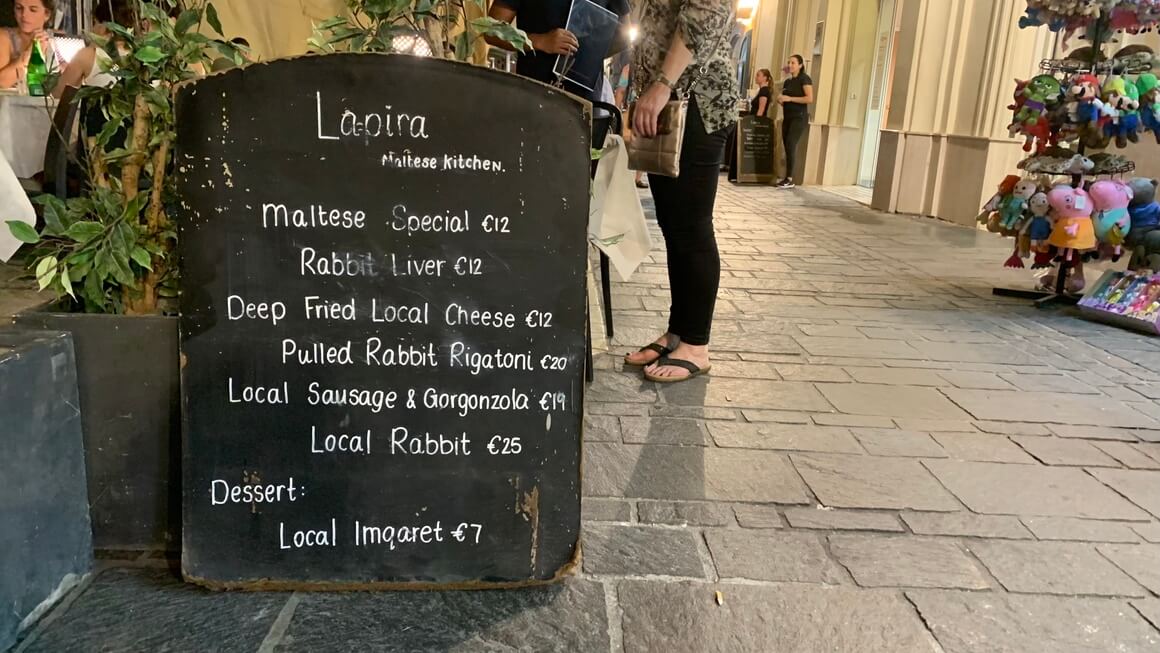
Photo: @joemiddlehurst
Along with the rest of the country, Valletta boasts a warm, Mediterranean climate. The summer months are hot and dry, and it’s a beachgoer’s paradise between June and September. Unfortunately, this also coincides with the busiest time of the year and the island plays host to hoards of tourists.
In the low season (November – February), there are some great things to do in and around Valletta that are more along the music, arts, and culture lines. This is also a great time to visit the city as the low season means fewer tourists and deals on accommodation – winning! The only downside is that this time of year comes with cooler air and sea temperatures which aren’t ideal for hitting up the beaches and swimming.
Best Time to Go to Gozo
Why is Gozo awesome, you ask? Well, I’ll tell you why it’s one of my fav little islands in Europe.
It has an epic coastline and history for days – a real hidden gem in the Med. The Citadel in Rabat (also referred to as Victoria) dates back to the 15th century and is a must-see, along with many other archaeological sites and museums.
Then, of course, there are the beaches – second-to-none I’d say. You also can’t miss the picturesque Xwejini Salt Pans.

Photo: @joemiddlehurst
Now, when is the best time to visit Gozo? Well, if it’s beaching and swimming you want, then summer is going to be your best bet. June, July, and August are the best times to swim and head to the beach, but be prepared to get your elbows out and tussle for space.
The upside to the island of Gozo is that it’s not your go-to party location. It’s a bit quieter than the mainland and the crowds are a bit thinner, generally speaking.
Thanks to the moderate climate, There isn’t a bad time to visit the island. The shoulder seasons (April/May and September/October) are also a great option for heading to Gozo as the temperatures are still very comfortable and the crowds have dispersed.
Best Time to Go to Comino
The final and smallest of the three islands that make up Malta is Comino. It is comfortably nestled between Gozo and the main island of Malta. While Comino is largely unpopulated, it does serve as the perfect venue for hiking and as a result, is a popular day-trip destination.

Hiking aside, Comino is also a great place for beachgoers to descend upon. If you have never come across the Blue Lagoon before while researching Malta, well, it’s located on Comino Island.
So here, I’ll tell you a bit about it. The Blue Lagoon is a beautifully sheltered inlet, protected from the elements. The magazine-like blue waters cover snow-white sand below and it is the most picturesque spot for beaching and swimming.
The low season has its own attractions too, so not all is lost. You can go on a beautiful hike or walk and tap into your inner photographer to snap some epic pics. If you’re brave (and hot and sweaty enough), you can also head for a chilly winter dip.

Stash your cash safely with this money belt. It will keep your valuables safely concealed, no matter where you go.
It looks exactly like a normal belt except for a SECRET interior pocket perfectly designed to hide a wad of cash, a passport photocopy or anything else you may wish to hide. Never get caught with your pants down again! (Unless you want to…)
Hide Yo’ Money!Best Time to Visit Malta for Parties and Festivals
It is without a doubt that the best time to visit Malta for the party and festival scene is over the summer months (June to August). It is over the high season that the island really comes alive and the good vibes start to roll!
There are no less than four major music festivals in Malta that occur over this time that will entice partygoers to come to the islands. Think techno and house music, raves inside old castles, beach parties, boat parties, and some of the biggest names in international music.

I’ve highlighted a few of the biggest ones below to entice you. So, let’s dive in!
- The Malta International Spring Music Festival – The party and festival season in Malta begins every year in May with marching bands and orchestras performing in and around the country. While not one of the major parties that the country hosts, it is worth mentioning as it marks the official start of the season, and summer, for that matter.
- Lost & Found – St. Paul’s Bay hosts a series of secret castle raves, boat parties, and other techno, house, and dance music parties in June. This little bay on the mainland comes alive during this time and it attracts partygoers from near and far.
- ABODE on the Rock – A bit later in June, the London-based clubbers ABODE take to the island of Gozo to get things pumping! Expect similar vibes to Lost & Found – dance, techno, and house music, with late nights (or early mornings) and epic vibes.
- Isle of MTV – Did someone say the largest, free summer music festival? Yes, you heard correctly! Isle of MTV takes place in July every year and really sets the Il-Fosos Square alive in Floriana.
- Malta Jazz Festival – Moving away from the electronica and dance festivals for just a second, the Malta Jazz Festival also takes place in July and graces the city of Valetta with amazing jazz sounds. Be sure to check it out!
- Glitch – Glitch is the final EDM festival that takes place over the summer on the mainland. Think rooftop pool parties, crazy boat parties, and wild raves inside actual caves – that’s just the start. It is the final major party for the summer that happens every year in August and signals the end of summer is on its way.
Don’t Forget your Malta Travel Insurance
I am a budget traveller and I skimp on every penny I can. One thing that is NOT worth skimping on is insurance. Good European travel insurance is a non-negotiable. End of.
ALWAYS sort out your backpacker insurance before your trip. There’s plenty to choose from in that department, but a good place to start is Safety Wing.
They offer month-to-month payments, no lock-in contracts, and require absolutely no itineraries: that’s the exact kind of insurance long-term travellers and digital nomads need.
SafetyWing is cheap, easy, and admin-free: just sign up lickety-split so you can get back to it!
Click the button below to learn more about SafetyWing’s setup or read our insider review for the full tasty scoop.
FAQs About the Best Time to Visit Malta
Here are some of the most frequently asked questions about when to head to Malta. Feel free to drop your own questions in the comments below.
Final Thoughts on the Best Time to Visit Malta
Malta is an amazing country and each of its three islands has its own charm and attractions. I would highly recommend travelling to this European gem at least once in your life to experience the summer sun, beaches, and festivals. It is an experience that you will cherish forever!
I hope that my guide will do just that – guide you and help you to make any decisions that you found difficult, a bit easier.
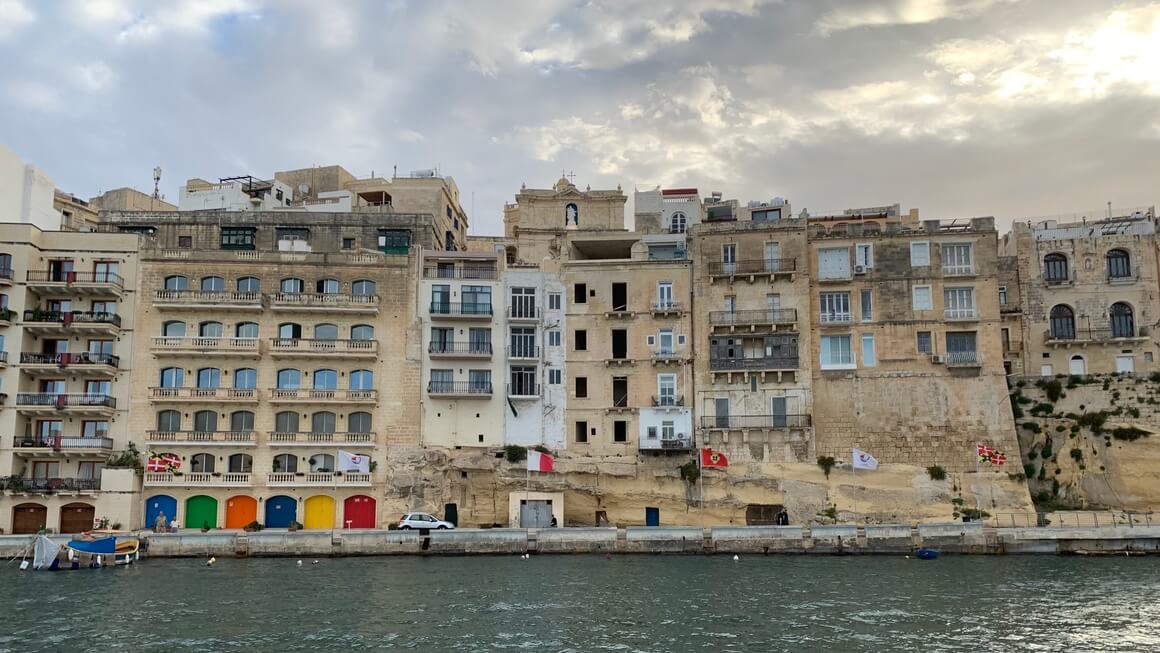
Photo: @joemiddlehurst
The best time to visit Malta depends on you and what you are looking to get from your time there. Is it the arts and culture? Swimming and soaking up the sun? Or is it wild partying until the sun comes up? Whatever you choose, you will definitely have an epic time exploring the islands and creating memories.
Lastly, and most importantly, always sort out your travel insurance before you head off. You don’t want to ruin your dream holiday with something that could’ve been easily avoided. I know I sound like I’m nagging, but you’ll thank me later!
Safe travels!
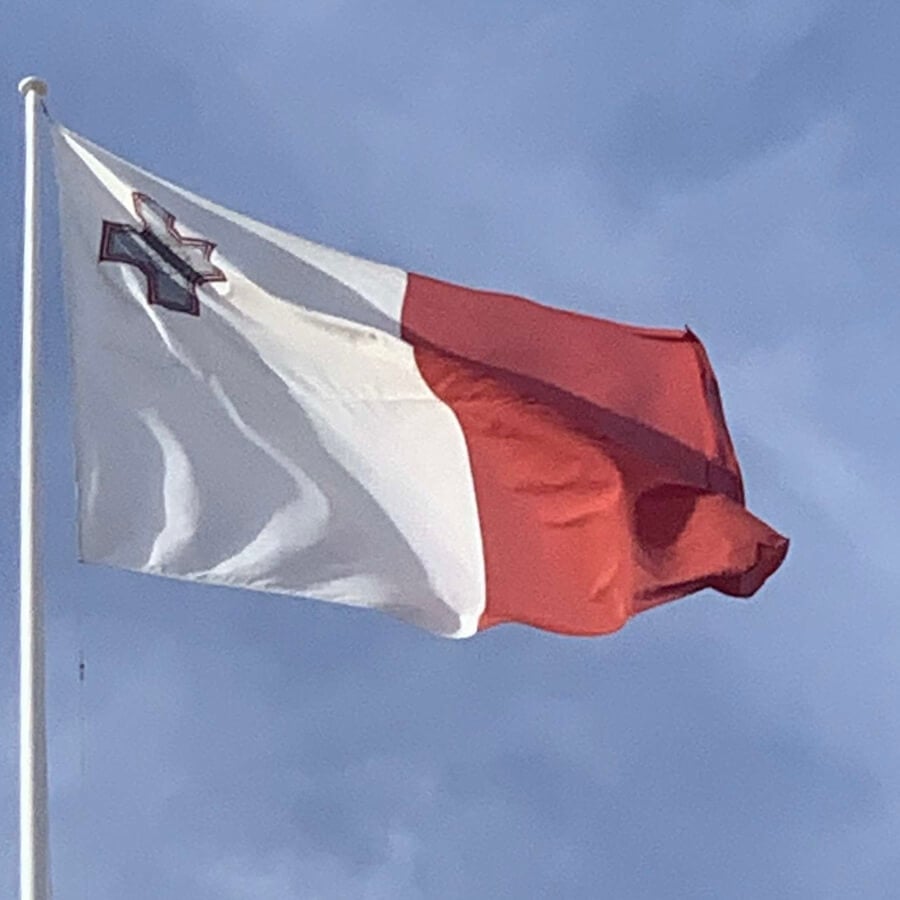
Photo: @joemiddlehurst
Buy Us a Coffee!
A couple of you lovely readers suggested we set up a tip jar for direct support as an alternative to booking through our links. So we created one!
You can now buy The Broke Backpacker a coffee. If you like and use our content to plan your trips, it’s a much appreciated way to show appreciation 🙂







